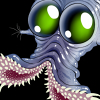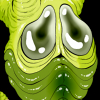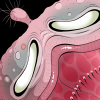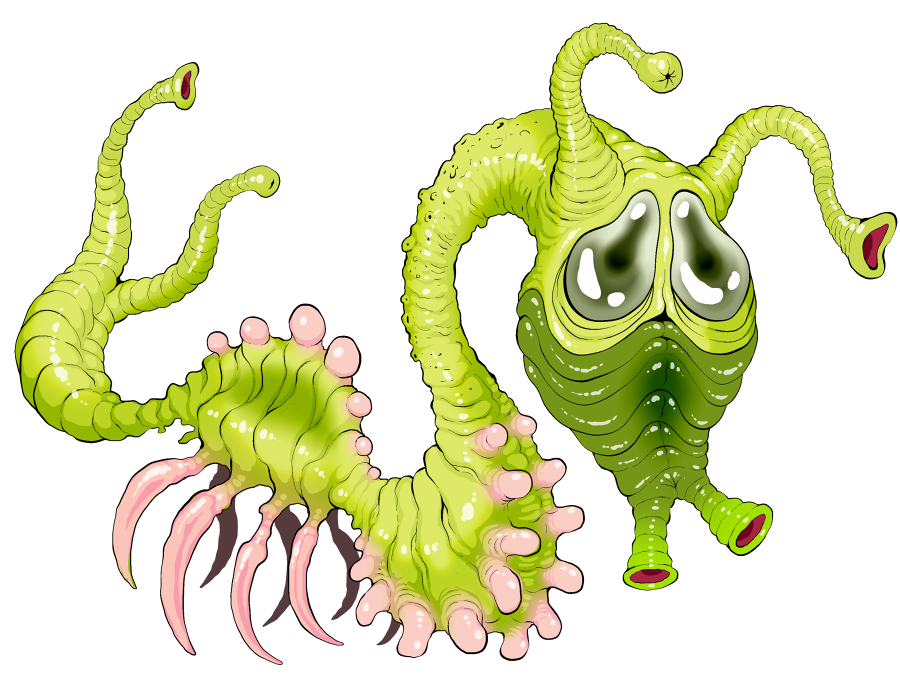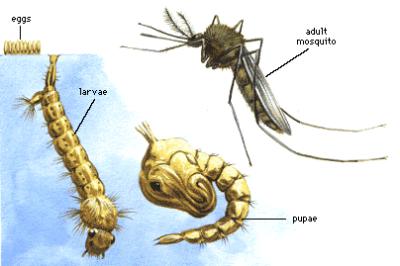BONUS MONSTER 02:
Sputtering Liquefier
VILEDUCT
Free supplementary monsters for the Mortasheen Tabletop RPG Core RulebookCreated by Jonathan Wojcik
Stats and additional writing assistance by Bonnie Saucier
This monster's large head is shaped almost like an insect chrysalis, with two milky, mournful looking teardrop-shaped eyes. Two fleshy, sucker-tipped antennae sprout from the top of the head, while the segmented "muzzle" splits into two shorter, thicker tubes at the bottom. The head hangs from a weak looking tubular neck that flares into a caterpillar-like upper body with two rows of pink, nublike feet. A second body segment resembles a shortened, hunched spinal cord with several pairs of rib-like legs, and a swollen, maggotlike tail segment splits into two more tubular feelers.
BIOLOGY:
The Vileduct was engineered to produce various acids for everyday household, scientific or tactical use, synthesizing the necessary chemical elements from its richly varied diet of both organic and inorganic matter. What appears to be "head" is anatomically both head and torso, housing most of its central nervous system and stomachs, while the rest of its trailing anatomy houses an extended network of gallbladders and intestines.
The creature refines two primary grades of acid suitable for direct application; what it considers its "hunting" acid is a powerful, concentrated chemical corrosive that immediately burns organic matter and slowly but surely eats away at more inorganic substances. Squirted as a thin froth from its posterior excretory tubules with considerable force, the purely destructive solvent is deployed only as needed to incapacitate other lifeforms or break down obstacles. In contrast, the syrupy "dining" acid secreted from a Vileduct's upper cranial tubules is a relatively complex combination of acids and enzymes adapted for digestion, slowly but steadily dissolving a wide range of materials down into a soft sludge. It feeds by circulating this predigested slurry through its two lower oral vents, cycling the chyme in a continuous process of ingestion and regurgitation until all usable nutrients or reusable chemical components have been extracted.
A Vileduct moves sluggishly, monotonously inching its forebody forward while its midsection catches up in intermittent spurts of awkward scuttling. It is better suited to remaining in place for extended periods, adapted to wallow in an ever growing pool of its own volatile waste as it slowly feeds on its surroundings and any hapless creature within squirting range.
Heavily resistant to corrosive substances itself, a Vileduct ingested whole by a larger monster may survive in its new surroundings until it either chooses to dissolve its way to freedom or its natural appetite for predigested matter slowly starves its new home. It seldom reproduces, laying a leathery, pouchlike egg that will hatch only through months of prolonged acid exposure.
BEHAVIOR:
Largely asocial, the typical Vileduct prefers to be either alone or in the company of only its own kind, communicating as necessary via subtle body language but otherwise respecting one another's personal space in an expansive community acid pit. They are known to grow more excitable only during heavy rain, dancing and "quacking" with delight as they're bathed in Mortasheen's toxic condensation.
Larger aggregations or "sinks" of Vileduct exhibit a unique mutual symbiosis with Mortasheen city, carving their pits into its nutrient channels in what was formerly assumed to be a strictly parasitic intrusion and likely began as such. Further study demonstrates that surrounding bioarchitecture not only tolerates but nurtures the formation of the sink, rerouting more channels to freely exchange nutrient energy as the colony digests countless prey items, detritus and their own dead. Several chemical by-products have been identified that the city funnels from these sinks for as-yet unidentified purposes.
Concept Notes:
Along with both the previous entry and the next one to follow, Vileduct is part of a long line of monster ideas we just tend to call "little guys;" smaller, simpler, humbler monsters who focus on doing just one thing really well, showcasing a single battle gimmick in a "minor video game enemy" sort of way, with a point total low enough to team up with even a brand new player. If you're like me and you obsess over the "viability" of your favorite collectible monsters in your hypothetical in-game teams, don't worry: Mortasheen's point-based system makes a horde of Little Guys just as formidable as a smaller squad of Big Guys, and even someone who focuses on the biggest, toughest beasts may need some scurrying rat-thing to fill in a leftover gap. It's exactly how I always wanted Pokemon to work, personally; why shouldn't I be able to beat some jerk's six mythicals with 22 bellsprout??When I sat down to come up with an "acid damage" Little Guy, I knew I wanted it to be really alien and peculiar, evoking some kind of unfamiliar body organ system and really look right off the bat like a creature that only fights via chemical weaponry. I went for a pitiful, fragile and sickly appearance, with anatomy that could possibly remind you of something "half-digested" itself, and a face that evokes a biohazard mask, actually borrowing the overall shape from one of my personal favorite, deeply unappreciated shapes in the animal kingdom, a pupating mosquito.
The fact that they "quack" was the most last-minute detail I realized they absolutely needed before uploading this.
GAMEPLAY BLOCK:

WAYS YOU CAN SUPPORT THIS SITE!
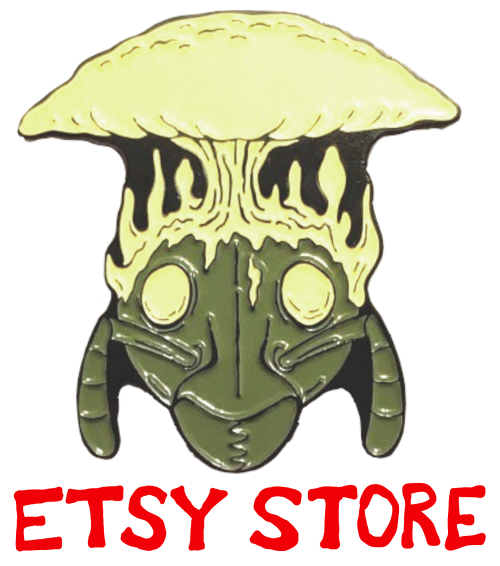
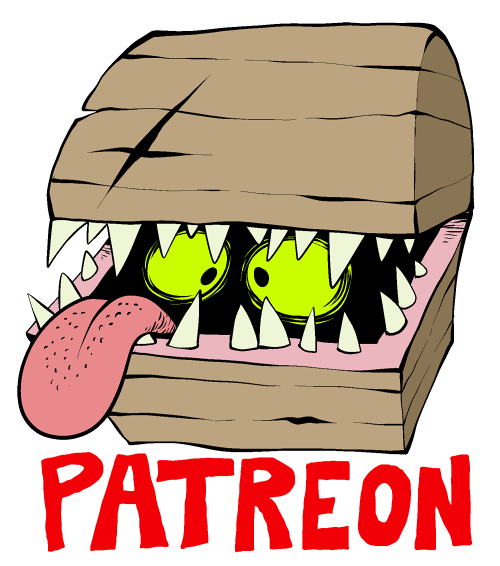
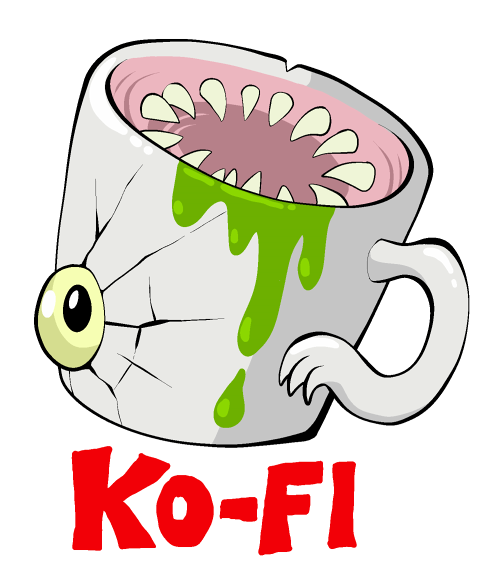
MORE:
